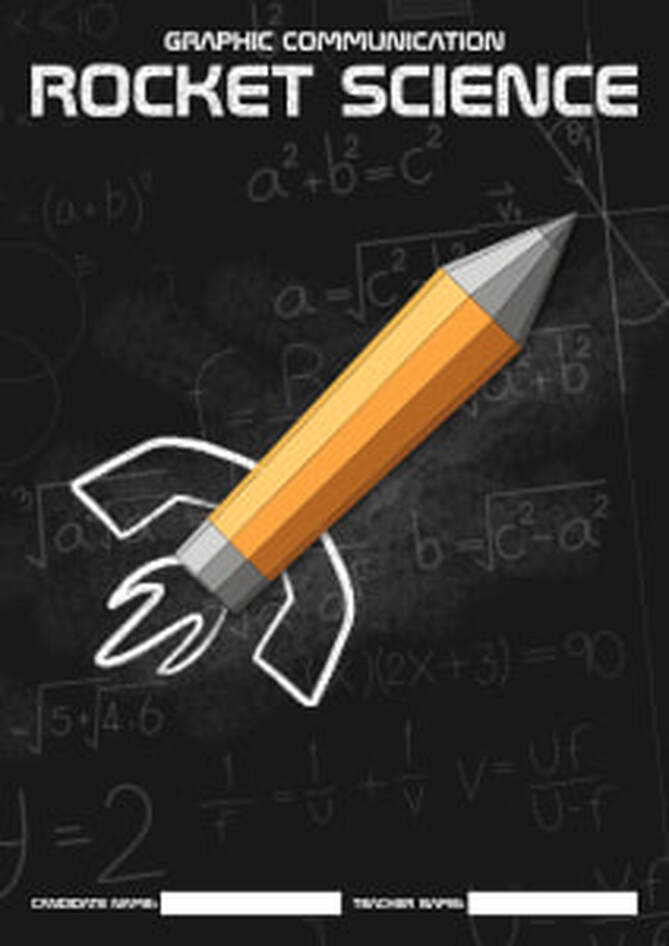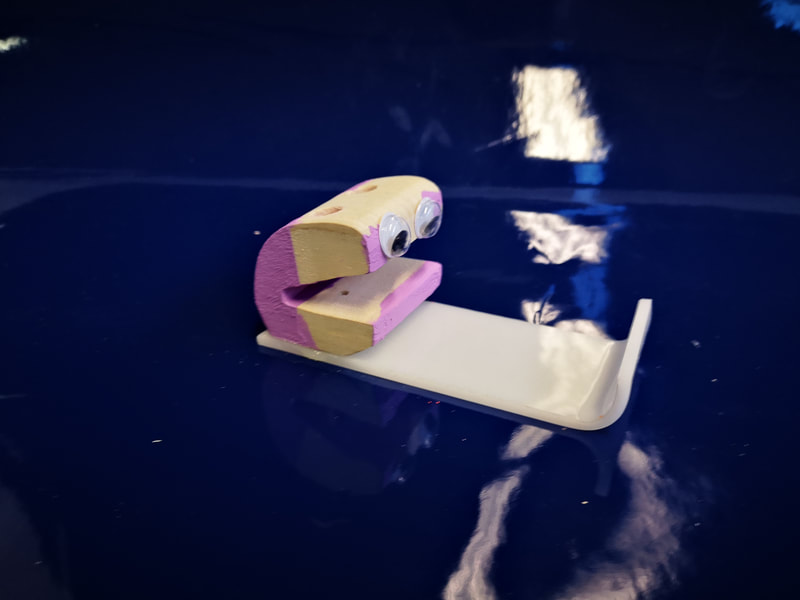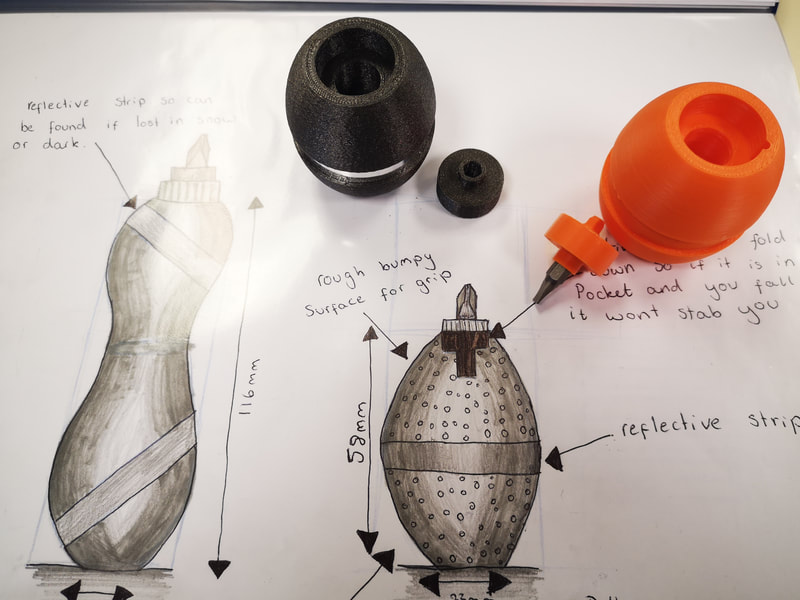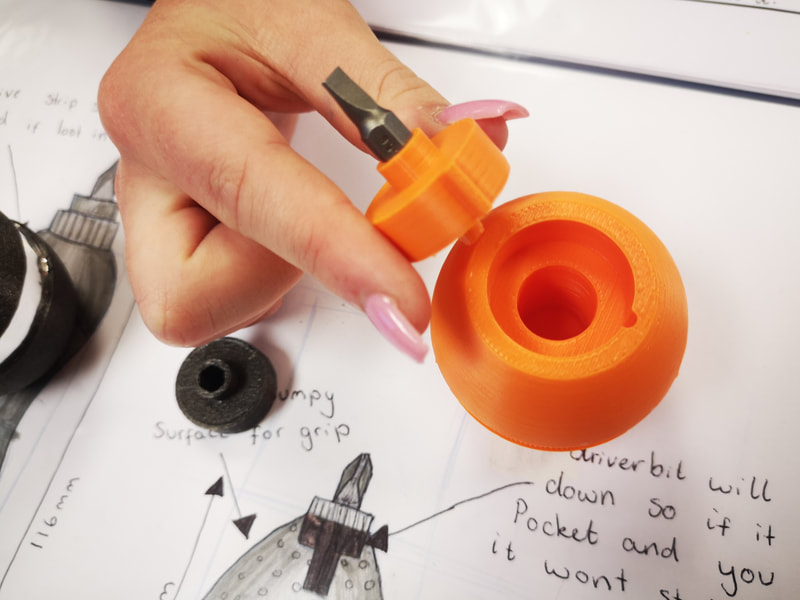DesignClass | Design & Technology Scotland
June 2023 Update Log6/6/2023 Hi everyone!
I'm sorry for the lack of updates and new work. I have been working on stuff, but nothing is fully finished or ready for upload. As many of you know, my family and I started a big adventure by moving into the countryside and out of the centre-belt of Scotland. We are absolutely loving it here and have made many new friends. Our new school is excellent too (we both work in the same school again!) - we have been really lucky and worked in excellent schools during our careers. So, I have a few wee projects coming together. This is a new mini-project for Graphic Communication - a nice wee entry primer for those starting their graphics journey. I'll be making a supporting video this week too. Click here to go straight to it. I am considering selling my rocket-launcher design. Is that something people would be interested in? Anyway, thank you for all the support and encouragement. Hope you are all doing well. Scott
1 Comment
August 2021 Update Log8/31/2021 Hope you all had a good holiday. I spent some much needed time with my family, especially my little boy. I've been working on some stuff though!
Let me know what you would like to see added to the site. Graphic Design / DTP Course Notes for N5 Graphic Communication:
Technical Graphics:
Chasing reality4/17/2021 Early in my teaching career, I was incredibly fortunate to have worked with Mike Wood, Principal Teacher of Design, Engineering and Technology. He is a legend of our subject and a genius with both graphics and craft skills - those that know him, will know what I mean. I learnt so much observing his interaction with children and his own creative skills and processes. He could turn his hand to almost any project and create beautiful work with a gentle modesty that left you feeling inspired rather than jealous.
I spent many an evening in the department learning from him. One particular lesson stuck with me; pupils can produce work to rival college, university or industry if we show them the science and craft behind the processes. Those that know me, know I have a love for design and graphics. Particularly, I have always been pushing courses to match what Mike taught me; we can get pupils to produce industrial quality work. Obviously, this can sometime be a challenge - mostly because we must prepare pupils for exams and coursework - and this can limit the time to dive into subject-depth. However, I have recently been reflecting on how we introduce concepts in Graphic Communication. Can we improve understanding, quality and attainment with the same time we have? I have been pushing creative graphics for many years (I was using 3DS Max with pupils for Advanced Higher way back in 2008), and have recently been integrating using Blender with 3D CAD. For instance, with S3 this year, I had pupils use Blender before sketching, using a drawing-board or 3D CAD. I had pupils use simple vertice-editing techniques to explore orthographic projection and create animations. From this domain, pupils moved to sketching and 3D CAD. For a 'return-from-Covid' series of lessons as a clean-slate of learning, we have been covering 3D CAD assembly constraints. This was based on the Lego mini-figure STEP files you can download from this site. From this assembly, the files are taken into Blender for rendering. For me, this is where the fun begins. We have looked at material-mapping, bump-mapping, procedural-materials, plane-maps (decals), HDRI, fresnel, aspect-ratio, perspective and depth-of-field... Not to mention the technicalities of rendering. Now, I can hear the arguments of "This is too much - especially for S3, National 5 or even Higher!", but I disagree. Firstly, the learning doesn't take too long and pupils are genuinely interested, especially when the science of light and materials is included. Secondly, pupils are inspired to build that portfolio - and a good portfolio is always valuable evidence, as this lockdown has shown. The portfolio is also useful for college, university or potential employers and here is the most important part - pupils are learning real, industrial graphic skills. Now, some results are clearly better than others - but even the 'least good' render above is still a solid top-tier result and very respectable. It has not taken long to generate these results, but the engagement is really high. From here, the project will move to graphic design and DTP for some packaging. I'll update this blog post once there is progress there. I will be making videos about how to create renders like these, but would really be interested in your opinions of Graphic Communication and where the future of the subject lies... Please comment below. DeskMonsters12/19/2020 This is old favourite project - the Desk Monster! A simple brief of creating a monster-themed desk ornament that holds at least one pen or pencil. Pupils are given both a wooden block (in this case 50x50x50mm, and a strip of acrylic (50x120mm). After much iteration with foam and cardboard, pupils move to their final designs.
I will be posting this as a task in the BGE section of the site in the coming months. S3 Design & Manufacture12/5/2020 This is has been a term to remember - or forget - like no other. Still, I am happy with the progress made.
Introducing Design and Manufacture to S3 can be a tricky balancing act. Some pupils expect to be completing a course similar to woodwork or metalwork, with nothing but making activities and can be shocked at the level of knowledge and design-theory that is required. Some pupils love blue-sky design thinking, but are nervous of actually making. I have experimented with different approaches over the years, but may have struck a winner. I always start with introducing the 'design process' including Briefs, Research and Specifications. This can be somewhat dry and abstract, but I also don't want to go through the full process to design and complex manufacture. In this simple task, I provide the pupils with a driving-bit for an electric screwdriver. I will introduce the task by asking pupils to drive in a screw using the driving-bit alone. After much struggling, I then have the class research the problem - they lack a suitable handle. I provide a brief (which you can download from the N5 DM section of the site) and pupils analyse this brief, plan and conduct their research. This includes using calipers to measure the driving bit and simple ergonomic/anthropometric research. After the research, a simple Specification is created. Usually this is the end of the tale. However, in this instance, I asked pupils to create simple 2D sketches for concepts then quickly take these to 3D CAD. For most, their designs required simple revolved profiles. However, some pupils who also do Graphic Communication were able to complete vastly more complex designs. These models were then 3D printing. I will probably rant more about 3D printers soon, and how they are sometimes treated as gimmicks in Scottish schools. However, in this case, every pupil printed their model at least once and several actually iterated their designs with subsequent improvements. The class morale was improved; they understood briefs, types of research, specifications and even CAD and 3D printing. I'm happy with the results above. Let me know what you think. This blog will sometimes have guest authors, links or material from others sites.
All opinions here are those of the original authors and do not represent those of DesignClass or any other organisation. Just so you know. This blog will have galleries or work or things I see from my travels. Forgive the typos! :) Archives
December 2023
Categories
All
|
Copyright © 2012 - 2023 | All content on DesignClass is copyright, unless otherwise specified.
No work or material may not be copied or reproduced without permission.
You may share resources, but not alter without prior permission.
All rights reserved.
No work or material may not be copied or reproduced without permission.
You may share resources, but not alter without prior permission.
All rights reserved.
































 RSS Feed
RSS Feed